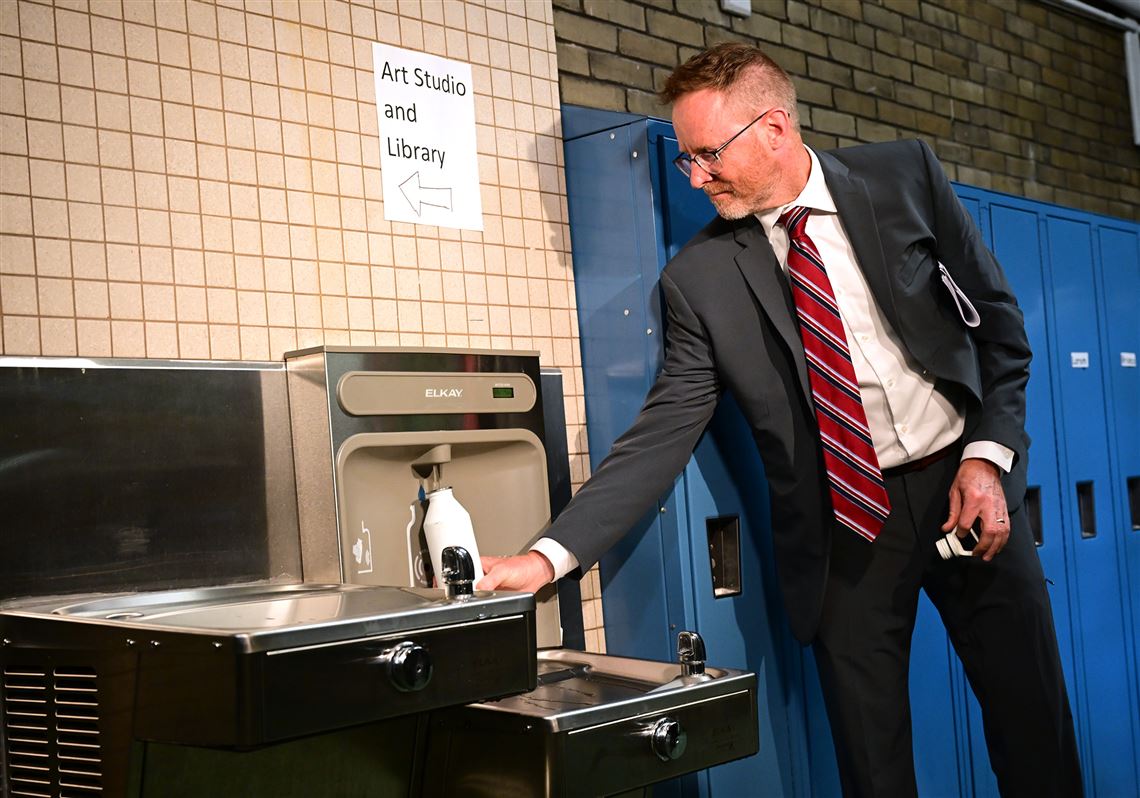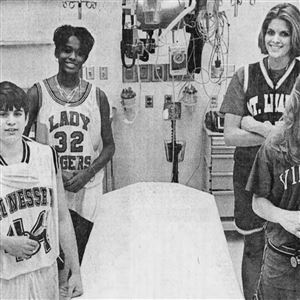Pittsburgh Public Schools facilities stopped testing for lead in students’ drinking water in 2016. They already knew the results would come back positive – so instead of sampling, they just began fixing.
Last week and over 900 lead filters later, all PPS students are drinking water that is guaranteed to be lead free. It’s a stellar voluntary effort from the district, and a massive endorsement that even cash-strapped schools can protect their students by enforcing proper policy. The entire project cost $5.5 million over roughly eight years — barely a drop in the bucket for a school district with over $700 million in its operating budget.
For a district prone to mismanagement, it was a decision that has proved to be both forward-thinking and cost-effective. Other school districts across the county and state should follow suit — and if they won’t do it on their own, the state legislature should force their hands.
A long-term solution
Most Pennsylvania school districts are still caught on the hamster wheel of piecemeal testing and replacement of drinking water facilities, wasting time and money when a better solution is already at hand.
Annual lead testing is futile for one main reason: Its existence in buildings of a certain age is virtually guaranteed. For instance, a 2021 report by Women for a Healthy Environment surveyed 65 Pennsylvania school districts and found that 91% had lead in their water. Some of PPS’ oldest buildings predate the safe water laws of the 70s and 80s by more than 50 years.
Further, federal law only banned lead parts in water fountains about a decade ago, and lead also seeps into tap water from supply lines. Even newer schools are likely to have some exposure.
Besides returning predictable results, testing has other serious limitations.
Lead leaches into water over time, so factors like how long water has been sitting in pipes can drastically affect results. If a school flushes its system before testing, the results are likely to underestimate lead contamination. Cold water also absorbs less contamination than hot, so results can change based on seasons and outside temperatures, or even the location of pipes in a building. Marc Edwards, a lead expert and a whistleblower in the Flint, Mich., water crisis, has called lead testing the equivalent of “Russian roulette.”
Because of the inconsistency of testing, schools can receive haphazard data that result in a haphazard piecemeal approach to remediation. Meanwhile, the districts shell out year after year for testing, at hundreds of dollars per drinking water access point, when relatively inexpensive lead-filtering fixtures — fountains, faucets, water-bottle filling stations — can solve their problems for good.
This approach is much more cost-effective in the long run. In Michigan, “filter first” policies enacted by Gov. Gretchen Whitmer last year will save schools an estimated $330 million in testing costs over the next decade.
No safe levels
Lead is incredibly dangerous for children. Growing kids can absorb four to five times as much lead as adults, and are also much more sensitive to the negative effects of even small amounts of the neurotoxin.
There is no safe consumption threshold for lead; any amount can lead to severe problems for children, including brain and nerve damage, stunted development and eventual behavioral problems and lower IQ. Lead also builds up in young bodies, often without any outward symptoms until the damage is already permanent.
Allegheny County began testing children entering kindergarten for lead in 2017, and the results showed alarming pockets of contamination. In some neighborhoods, like Perry South and Beltzhoover, over 10% of children under 6 had elevated lead levels in their blood.
PPS’s initiative removes one source of lead exposure for children in these neighborhoods. Other districts that cover areas with high lead contamination levels include McKeesport, Woodland Hills, Sto-Rox and Carlynton.
Flimsy laws
There is currently no state mandate requiring schools to address lead contamination in their drinking water. In 2018, Act 39 attempted to make some headway by “encouraging” school testing, but the law is misguided, limited and easily sidestepped.
The law encourages schools to test and to shut off dangerous taps, but there is no enforcement mechanism for schools that don’t test, test only partially or don’t post their results publicly. This lack of regulatory teeth is paired with an incredibly big loophole: schools that don’t want to test at all may simply discuss the concept of lead — to any degree, in any way — at a public meeting.
The nonprofit United States Public Interest Research Group has rightly given Pennsylvania an F rating for legislation regarding lead in school drinking water.
A new law that would correct this legislative oversight is already in the works, introduced by state Sen. Devlin Robinson, R-Allegheny. SB986 is a “filter first” initiative that would require schools to equip all school water fountains with filters by Jan. 1, 2026. While this will save schools money in the long run, to alleviate any sticker shock the bill also allocates $30 million from the state’s General Fund to cover the parts and installation. SB986 has been endorsed by state doctors’ associations, teachers unions and building trades unions.
There’s no good reason to continue to expose children to lead in their schools. Either the districts themselves, or the state, needs to do right by Pennsylvania students and their parents and, once and for all, eliminate lead in school drinking water.
First Published: May 23, 2024, 9:30 a.m.















